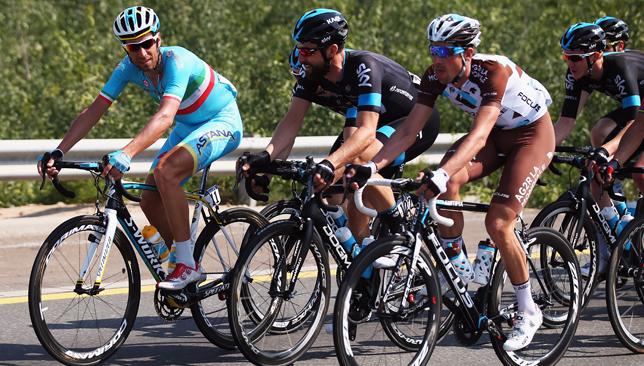
It’s always fascinating watching a young project blossom. And that is precisely what is happening with the two-year-old Dubai Tour.
The second edition of the cycling extravaganza witnessed evolution in almost every facet and the result was a thrilling fight for the blue jersey that went down to the wire.
– #Quiz360: WIN dinner for 2 at Jumeira Rotana, Dubai
– #CWC15: World Cup Stick Cricket is here!
– Organisers unveil grand plans to take Tour of Dubai to world stage
While it helps when you have a blockbuster name like Mark Cavendish win your event, there are far more reasons that led to the success of this year’s Dubai Tour.
For starters, the decision to scrap the prologue from last year was both a no-brainer and a game-changer.
Live – the final podium: 1st @MarkCavendish 2nd @johndegenkolb 3rd @juanjolobato #dubaitour – @CBDUAE Blue Jersey pic.twitter.com/YrmGk85kJA
— Dubai Tour (@dubaitour) February 7, 2015
Not only did it make no sense to have a time trial for riders using regular bikes (they wouldn’t travel all this distance with both time trial bikes and their normal ones), it also ruined the competition to find out the overall winner of the tour on the very first day. Sprinter Marcel Kittel won three stages but it was Taylor Phinney, who took the opening time trial, who was crowned Dubai Tour champion.
Replacing that time trial with a proper stage simply sparked life into the tour.
The short but steep 17 per cent climb at the end of stage three at the Hatta dam gave way to an incredible battle, which was must-see television, even if you know nothing about cycling. And to have it take place at a site as beautiful as Hatta certainly made it unforgettable.
The fact that the race was upgraded from a 2.1 category to 2.HC also meant that bigger and better teams formed the peloton and the level of cycling was stellar throughout the four days.
The organisers have been ambitious from day one. They now feel the tour, which is currently part of the Asian Pro Tour, deserves to be part of the UCI World Tour and it wouldn’t be surprising if they gain that status in the next few years.
Moving the tour headquarters from the Dubai World Trade Centre to the Dubai International Marine Club was brilliant, and it’s not just because having an office by the beach is a treat.
Placing the village at a location with more foot traffic meant that way more people showed up for the event, even people who were simply enjoying some sun next door.
Unlike last year, the full four stages were televised – a move which helped showcase the city to a wider audience, for more hours. That coverage drew interest to Dubai and helped the tour attract more sponsors (they already got Audi Al Nabooda Automobiles to commit for this year and 2016).
The question remains though, has the four-stage cycling race been embraced by UAE residents? It is a fact that the tour is very disruptive to the city’s traffic and while it seemed better organised this year, there was a significant jam on most days. Saeed Hareb, the chairman of the organising committee, made bold statements on Saturday saying his team is ready to host a 12-stage event.
It is important to stay focused on what is feasible for both the city, as well as the cyclists. Cavendish said on Saturday he is a big fan of these “short tours” and the Dubai Tour might lose its allure if the organisers become too ambitious. It would be much smarter to ease the residents into appreciating the sport, rather than bombarding them with a week-long race that would wreak havoc in their daily life.
While the Emirati school of thought is typically ‘go big or go home’, this is a case where less could actually mean more.